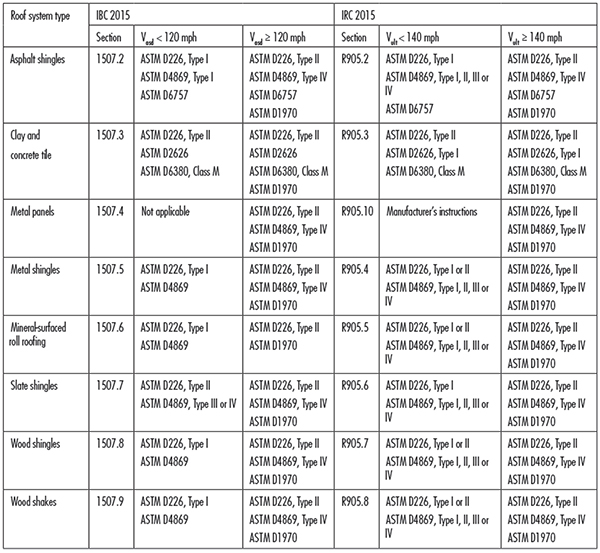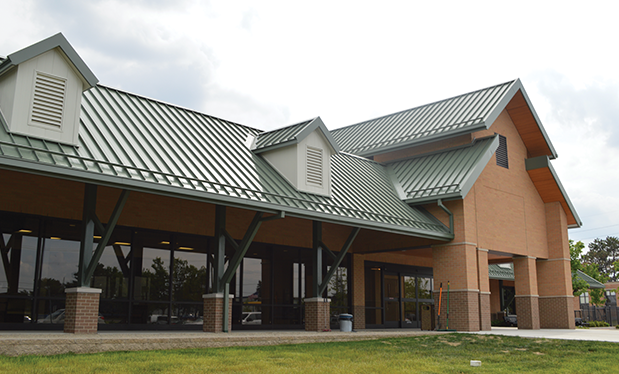Proper underlayment is a critical component for steep-slope roof system performance. Building codes provide minimum requirements for underlayments, but some of these requirements may limit underlayment options.
Code requirements
Minimum requirements for underlayment products used as components for steep-slope roof systems are provided in the International Building Code, 2015 Edition (IBC 2015), Section 1507—Requirements for Roof Coverings. Separate requirements are provided for each steep-slope roof system type located in areas where the nominal design wind speed (Vasd) is less than 120 mph or 120 mph and greater.
Similarly, the International Residential Code, 2015 Edition (IRC 2015) provides product requirements for steep-slope underlayments in Table R905.1.1(1) Underlayment Types. Separate requirements are provided for each steep-slope roof system type located in areas where the ultimate design wind speed (Vult) is less than 140 mph or 140 mph and greater.
IRC 2015's 140-mph Vult threshold is equivalent to a Vasd of about 108 mph, making IRC 2015's "high-wind" underlayment provisions slightly more stringent than IBC 2015's provisions.

IBC 2015 and IRC 2015 product requirements for steep-slope underlayments |
The figure provides a summary of the underlayment product requirements for IBC 2015 and IRC 2015. It is important to note each underlayment is an asphalt-based product; no nonasphaltic or synthetic underlayments are specifically permitted by IBC 2015 or IRC 2015.
Careful selection
NRCA recommends underlayment products for steep-slope roof systems be carefully selected based on specific project requirements, building code requirements and the steep-slope roofing product manufacturer's recommendations.
If use of a nonasphaltic or synthetic underlayment product is being considered for a specific project, code acceptance can be sought by making a specific request to the authority having jurisdiction (AHJ). AHJs typically will request an evaluation report, such as those provided by ICC Evaluation Service or Underwriters Laboratories Inc. AHJs may grant code acceptance for alternative underlayment products on a project-by-project basis and typically not a blanket acceptance applying to all future projects in a specific jurisdiction.
Additional information regarding steep-slope underlayment products is provided in The NRCA Roofing Manual: Steep-slope Roof Systems—2017.
Mark S. Graham is NRCA's vice president of technical services.



